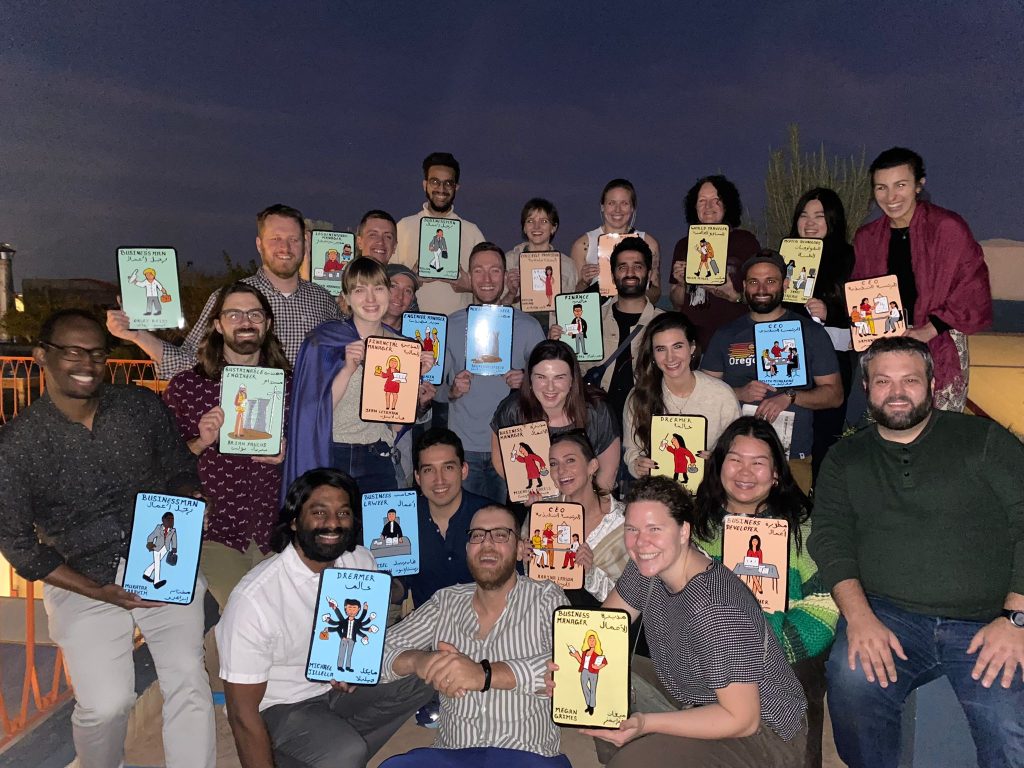Welcome to the Program Participant Resource Center. This webpage was created to serve as the comprehensive resource hub for all our program participants, whether you’re joining us through our faculty-led program or summer abroad programs, facilitated either via our university partners or directly through MOBT Global. Here, you’ll find information curated to enhance your understanding and preparation for your upcoming journey to Morocco. From cultural insights to practical travel tips, we aim to equip you with the knowledge and resources necessary to make the most of your experience. We are excited to welcome you to Morocco!

Quick Facts about Morocco
Capital: Rabat
Population: Approximately 36 million people
Official Languages: Arabic, Berber; French is widely spoken
Currency: Moroccan Dirham (MAD)
Climate: Mediterranean climate along the coast, with hot summers and mild winters; arid desert climate in the interior regions
Famous Landmarks: Djemaa el-Fna square in Marrakech, Hassan II Mosque in Casablanca, Chefchaouen’s blue-painted streets, and the ancient city of Fes.
Cuisine: Moroccan cuisine is diverse and flavorful, known for dishes such as tagine, couscous, pastilla, and mint tea.
Religion: Islam is the predominant religion, with mosques and Islamic traditions playing a significant role in daily life.
Geography: Morocco is bordered by the Atlantic Ocean and the Mediterranean Sea, with diverse landscapes ranging from mountains and deserts to forests and coastal plains.

FAQ
Spring (March-May): Spring is one of the best times to visit Morocco, with comfortable temperatures and blooming landscapes. Daytime temperatures range from 20°C to 30°C (68°F to 86°F), making it ideal for outdoor activities and sightseeing.
Summer (June - August): Summer in Morocco can be hot, especially in the interior regions and desert areas. Daytime temperatures often exceed 30°C (86°F), with some areas experiencing temperatures above 40°C (104°F). Coastal areas offer relief with cooler sea breezes.
Fall (September - November): Autumn brings milder temperatures and pleasant weather to Morocco. Daytime temperatures range from 20°C to 30°C (68°F to 86°F), making it another excellent time for outdoor adventures and cultural exploration.
Winter (December - February): Winter in Morocco is mild along the coast but can be cold in the interior regions and mountains, with temperatures dropping below freezing at night. Daytime temperatures range from 10°C to 20°C (50°F to 68°F), making it a popular time for desert excursions and mountain trekking.
Sturdy Footwear: Bring comfortable walking shoes or hiking boots for exploring cities and hiking trails. Sandals are also handy for beach outings and casual wear.
Travel Documents: Don't forget your passport, visa (if required), travel insurance, and any necessary vaccination certificates. Make copies of important documents and keep them in a separate place.
Personal Essentials: Remember to pack toiletries, medications, sunscreen, and insect repellent. It's also a good idea to bring a reusable water bottle to stay hydrated.
Daypack: Carry a lightweight daypack for excursions and sightseeing trips. This will come in handy for carrying water, snacks, camera gear, and souvenirs.
Adaptor and Converter: Morocco uses European-style plugs (Type C and E) with a voltage of 220V. Be sure to bring a suitable adaptor and voltage converter for your electronic devices.
The call to prayer occurs five times a day, starting with Fajr (dawn), followed by Dhuhr (midday), Asr (afternoon), Maghrib (sunset), and Isha (night). The timing of these prayers changes daily based on the position of the sun, so it's advisable to check prayer times locally or through mobile apps for accurate information.
Important:
In order to enter Morocco: Your passport must be valid for six months following date of entry.
